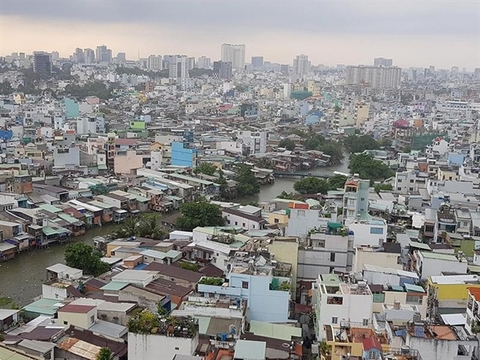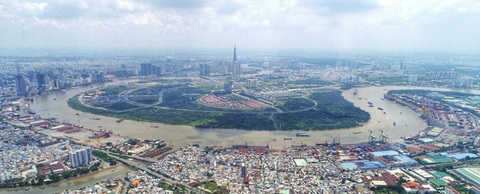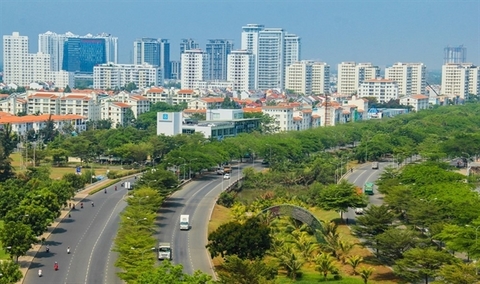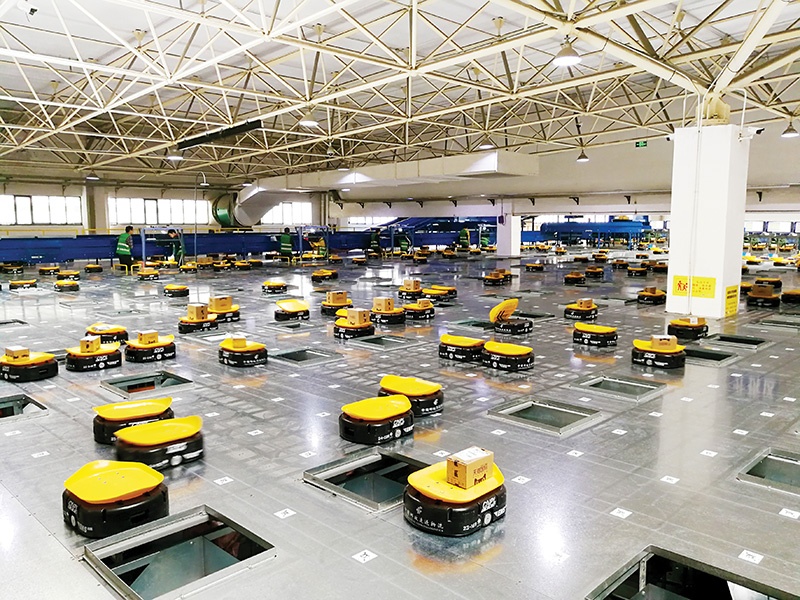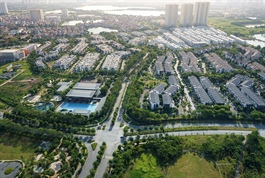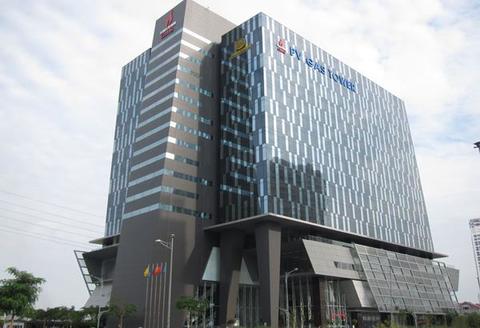Riding the wave in Vietnam’s real estate market in 2022
Riding the wave in Vietnam’s real estate market in 2022
The real estate market has ended a year of profound impacts with some very encouraging news as both domestic and foreign developers are finally speeding up the construction of new projects.
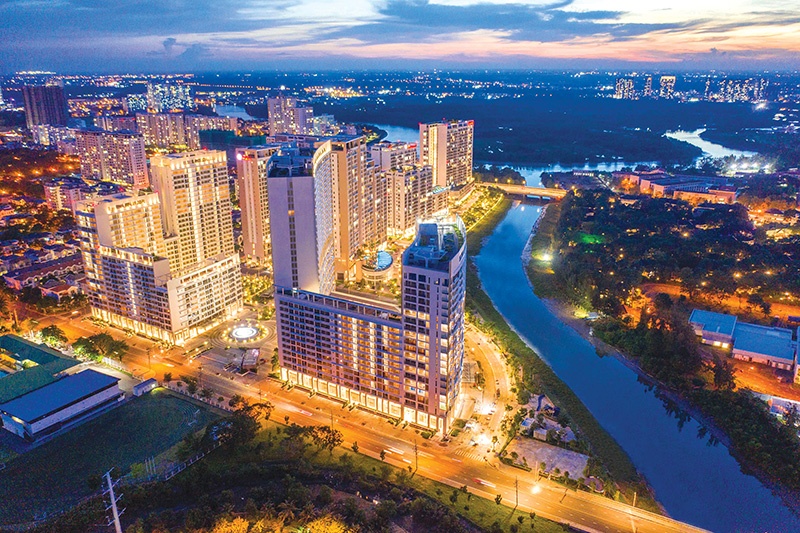
In the last days of 2021, Ho Chi Minh City People’s Committee issued a decision approving the adjustment of the 1/500 detailed planning of the eco-smart city project invested by Lotte Group in Thu Thiem New Urban Area of Thu Duc city.
This is a significant turning point after the project has been stalling for nearly 10 years due to the government’s review and inspection of all projects in Thu Thiem New Urban Area. In March 2021, the government issued a decision to permit Lotte Group to continue this project after being reviewed by competent bodies.
The project is invested by Lotte Group with a capital of nearly $1 billion to develop a financial centre, commerce and general services, and multi-functional residential units to accommodate more than 6,500 people.
Meanwhile, CapitaLand Development (CLD), one of the leading Singaporean real estate developers in Vietnam, in November unveiled two new key projects – Heritage West Lake in Hanoi and DEFINE in Ho Chi Minh City. With the addition of these two residential projects, CLD has over 7,300 units across 14 residential developments in Vietnam.
Moreover, in December, CLD and Becamex IDC signed an agreement to develop Binh Duong New City. CLD will acquire a prime site from Becamex IDC for its first large-scale residential project in Vietnam, with a projected total gross development value of approximately S$1.12 billion ($796.9 million).
With a total area of 18.9 hectares, the prime residential project is expected to comprise over 3,700 freehold residential units providing homes for about 13,000 residents. The first phase of about 1,300 landed houses and apartments will be completed in 2024 while the rest of the project is scheduled for completion in 2027.
Great optimism in the market
Information of the Omicron variant of COVID-19 appearing in Vietnam from a UK arrival in December has been a cause for worry in the real estate market. However, many market players still have their hopes up for a recovery in 2022 due to the Vietnamese mentality of wanting to own houses and residential land, continuously driving demand.
Along with Lotte Group and CLD, many other developers are also implementing projects with optimism. Sharing with VIR, many said that investment flows would remain strong in 2022 as there are many positive signals for recovery and growth.
According to economist Can Van Luc, nearly $2 billion of newly registered foreign investment had been poured into real estate in the first 11 months of 2021. He highlighted positive moves in the legal environment, with the National Assembly set to discuss amendments to the Law on Land and other statutes.
Additionally, in the socioeconomic recovery and development programme for the next two years, the government and the National Assembly are discussing a package of about up to $2.83 billion) for affordable housing development.
“If approved, this would provide a strong boost with a relatively favourable interest rate, possibly about 3-4 per cent lower than current market rates,” Luc said.
Another positive factor is that Vietnam entered the top countries with vaccine coverage for COVID-19 and made reasonable strategic policy adjustments, elevating the potential for recovery.
Suburbs and satellites take lead
As for the housing and resort investment segment, according to David Jackson, CEO of Colliers International (Vietnam), the way they do across the world, homebuyers are now looking for real estate in the suburbs. People are moving to the countryside, looking for open spaces and enjoying the outdoors.
“We have attractive destinations such as Bao Loc, Dalat, and Ho Tram. From Ho Chi Minh City, it is easy to drive to these locations and homebuyers can find second homes here to get away from the city and enjoy the open space. This trend is expected to continue to grow post-pandemic,” said Jackson.
Ha Van Thien, deputy general director of Tran Anh Group, also forecast real estate in the suburbs to attract strong investment flows in the coming time.
“Last year was a special one. While we could not reach all our goals set at the beginning of the year, business results were not too bad. Every cloud has a silver lining, and this was especially true for Tran Anh Group when business was frozen in the first half due to the pandemic, but after the social distancing, many of our suburban townhouses became hotspots, bringing in good revenue,” Thien said.
“The pandemic is far from over, so demand for housing with a large area and fresh air that is not too far from the city will maintain. In fact, this trend has been quite clear since the end of 2020. Townhouse projects in the vicinity of Ho Chi Minh City such as Long An, Dong Nai, even a little further like in Lam Dong or Ba Ria-Vung Tau will be in high demand,” he stressed.
A market report from DKRA Vietnam from December said that the real estate market has quickly become active again after social distancing requirements were eased.
While in September, Ho Chi Minh City and its five neighbouring provinces of Binh Duong, Dong Nai, Ba Ria-Vung Tau, Tay Ninh, and Long An had almost no new supply, 649 new products were released in October.
In November, 10 projects opened sales, two of which are new and eight were subsequent phases of existing projects. Supply reached 671 products, an increase of 3 per cent on-month. The overall consumption rate of the market reached about 54 per cent of new supply, up 56 per cent on-month and up 33 per cent on-year.
Six townhouse and villa projects opened for sale in Ho Chi Minh City and surrounding areas in November, providing 1,008 units to the market. The take-up rate reached 36 per cent. Dong Nai returned to the centre of the townhouse and villa segments, accounting for 85 per cent of the supply and 74 per cent of purchases in the southern region. Overall liquidity in the segment in Ho Chi Minh City and the surrounding areas has started to increase again but remains at a low level.





